Physical Address
304 North Cardinal St.
Dorchester Center, MA 02124
The eyes and the periorbital area comprise a complex region consisting of many parts that all contribute to the attractiveness of the feature.
One part of this area is the brow. The brow is our entrance to the eye area, dominating the upper face. It is a key beauty characteristic giving rise to entire brow industries. However, it is difficult to comprehend how the brow has acquired such a prominent place in our appreciation of looks.
Part of the answer may lie in its function in sexual dimorphism. Although female brows may take a number of shapes it usually can be contrasted to the flatter male brow pattern.
The female brow may have several brow shapes, some being less-than-optimal:
Triangular, overarched, horizontal, or downhill brows are usually less desirable female brow shapes.
Although fashion may partly dictate the favored type of brow, whether it is bladed, tattooed or bushy, the preferred brow shape is a fairly mathematical exercise, like much of beauty.
In females, ideally the brow should start well within the inner part of the eye, more in line with the bridge of the nose and make an upward sloping angle of about 20 degrees from the beginning to the apex. The apex should lie about 2/3 along the brow and rest just outside the outer part of the iris. A method that is used to define this point reasonably accurately for brow shaping is to pass a line from the side of the nostril through the iris and onwards to the brow to define its high point. The end of the brow should sit on a similar line from the nostril through the outer corner of the eye to finish at the brow, assuming the nostrils are of a standard width ( ![]() ).
).
At the medial edge of the brow, chronic frown lines may make the subject appear concerned, angry, tense and worried and give a harsh look to the face. It is formed under the action of three main factors. These are in order of importance: tension, drooping of the eyebrow with increasing age and habits developed in speech.
Tension or anxiety give many perpetually worried people a perpetually worried looking brow. Even if they are not tense by nature, they will impart that emotion to others. Emotional contagion is a phenomenon by which a person if they appear tense, angry and worried and frown in their natural state that they will impart that emotion to others who are more likely to frown back at them making interaction with others potentially problematic. The opposite is also true and removing this gruff appearance will pacify the patient making them feel generally happier and make interaction with others potentially more pleasant.
The lateral brow exhibits emotions such as surprise, interest or delight.
The subtle nature of expressions elicited by movement of the lateral brow, especially a single brow, may display interest in what another is saying or may show a quizzical disbelief. Raising one or both eyebrows in everyday speech may be habitual and off putting or just appear to stress important points.
It is for these reasons of their importance in non-verbal communication that the brows so well express ( Fig. 17.1 ) that we bear responsibility for altering their function with neuromodulators and position with fillers and energy-based devices. Freezing the brow complex may not be to the advantage of the patient.
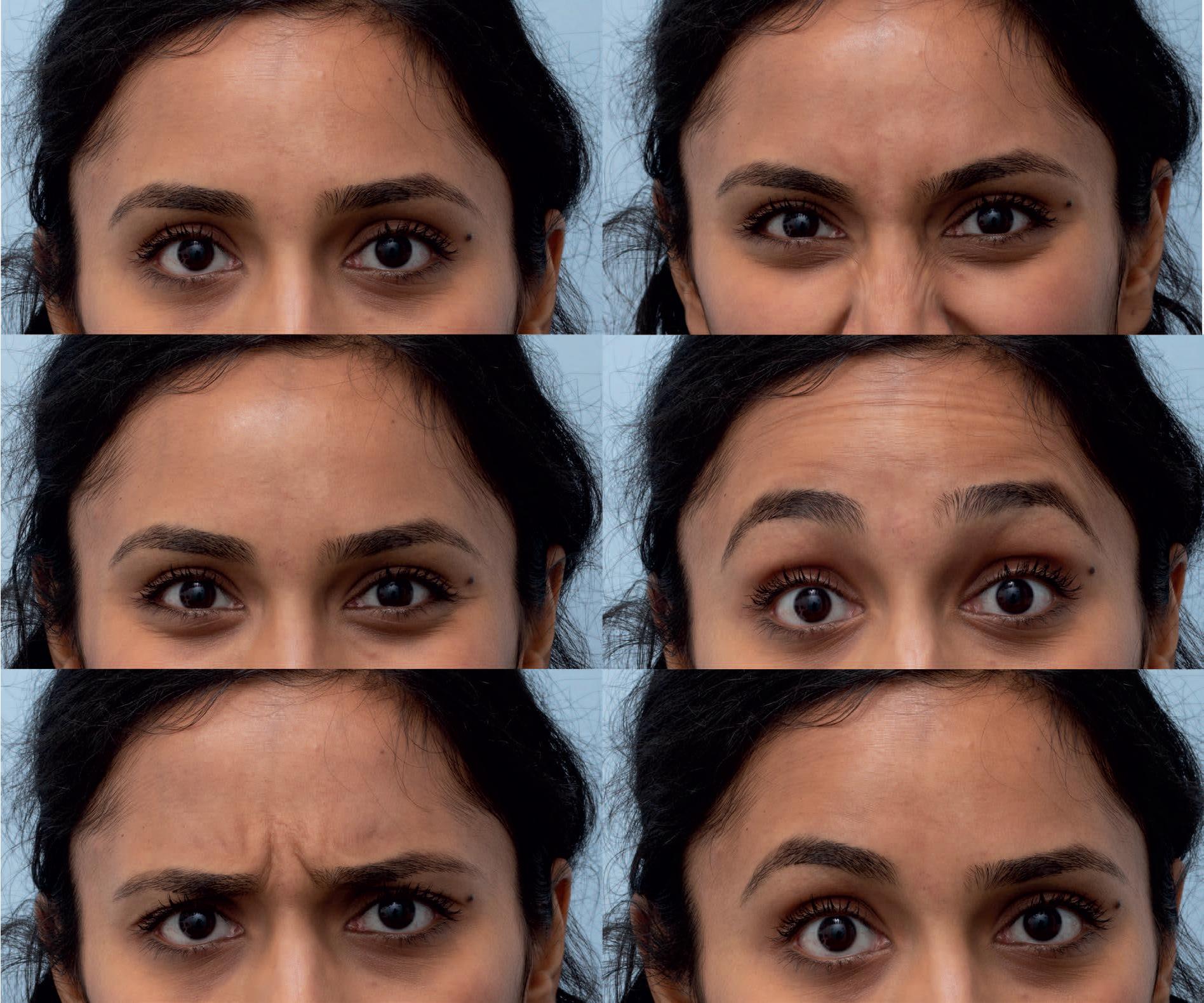
The position and shape of the brows and eyelids including periorbital region are determined by five main factors, four of which can themselves be affected by a combination of genetic inheritance, environmental impact, and voluntary and involuntary movement.
The muscles affecting brow and eyelid shape and position are the frontalis, the orbicularis oculi, the corrugator, procerus, the depressor supercilii, the levator palpebri superioris, Müller’s muscle and the lower lid retractors. A knowledge of the attachments and actions of these muscles is important for the injector of botulinum neurotoxin. Another factor affecting brow shape and position are the volume and morphology of the underlying tissues including bone. Tissue tone or resistance is extremely important, as is skin area or length . Not only are all these factors affected by genetic and environmental factors including trauma, but they can be affected by non-surgical and surgical interventions. Finally, gravity is a force against which all these former factors must act. Imbalances occur when we look at all these factors together. For instance, a high medial brow is normally a sign of aging, because it is often caused by the frontalis trying to lift the entire brow to clear the ptotic lateral brow from the upper eyelid.
There are many emotional attributes of the eyebrow structure
Even in a static position, eyebrows may still signify emotional attributes. Flat eyebrows may impart a brooding or tired appearance, a high arch surprise, whereas a downward brow position intense worry.
We may significantly alter in a negative fashion emotional attributes of the brow by flattening the brow or by disallowing the expression of anger, interest, disbelief and doubt inducing a flat inexpressive face.
Non-surgical interventions can affect muscles (neurotoxin and filler), volume (fillers), skin and tissue resistance (fillers and energy-based devices such as laser, ultrasound and radiofrequency), and area or length (by affecting muscle contraction with neurotoxin or tissue shrinkage with energy-based devices).
Botulinum toxin is the most non-invasive, safe and predictable treatment for the upper face. The brow is a center point of this agent’s effects. A knowledge of the periorbital musculature is essential for optimizing treatment ( Fig. 17.2 ).
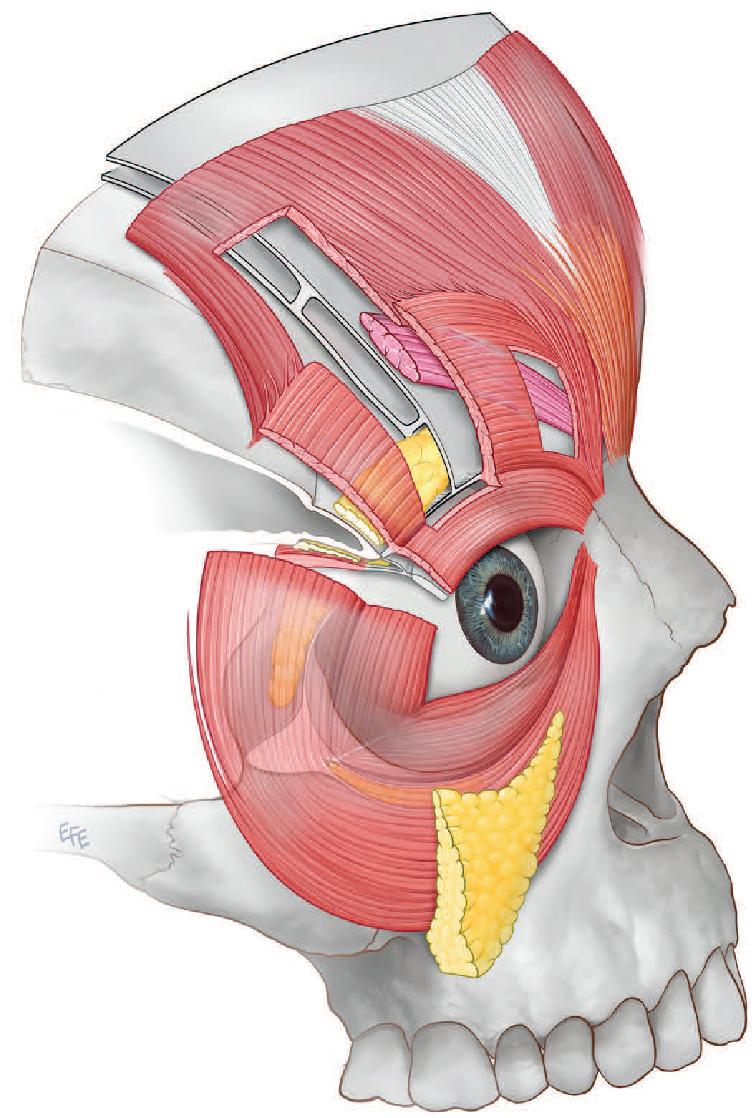
Treatment with this agent to affect brow position depends on many factors including age, gender, initial brow position, upper lid dermatochalasis and desire for brow correction or just stabilization.
The effect of botulinum toxin is mathematical. Injecting muscles with neurotoxin will progressively weaken them to the point of complete paralysis and change the balance of contraction towards the action of unaffected or less affected muscles, resting tissue tone and gravity. This is easy to understand with muscles that are direct antagonists to each other, but two other circumstances occur that are less apparent.
The first is where there is no apparent antagonist and pure relaxation occurs such as in the corrugator, or rogue orbicularis fibers, so the final position after injection is more dependent on tissue tone and gravity alone.
The second is what happens to sphincters. Sphincter muscles such as orbicularis oculi pull everything to which they are attached towards the center of the shape they describe. A normally functioning orbicularis oculi will therefore pull the entire eyebrow downwards toward the eye, assisted by its thickened portion medially (depressor supercilii), and to a lesser extent by corrugator supercilii and procerus. This depressor action is antagonized by frontalis. What happens if the sphincter is partially weakened? The sphincter fails to adequately close in that area leading to a “blowout” in that part of the sphincter. For example, a “blowout” in the sphincter superolaterally may allow an unopposed frontalis to more adequately lift the tail of the brow ( Fig. 17.3 ).
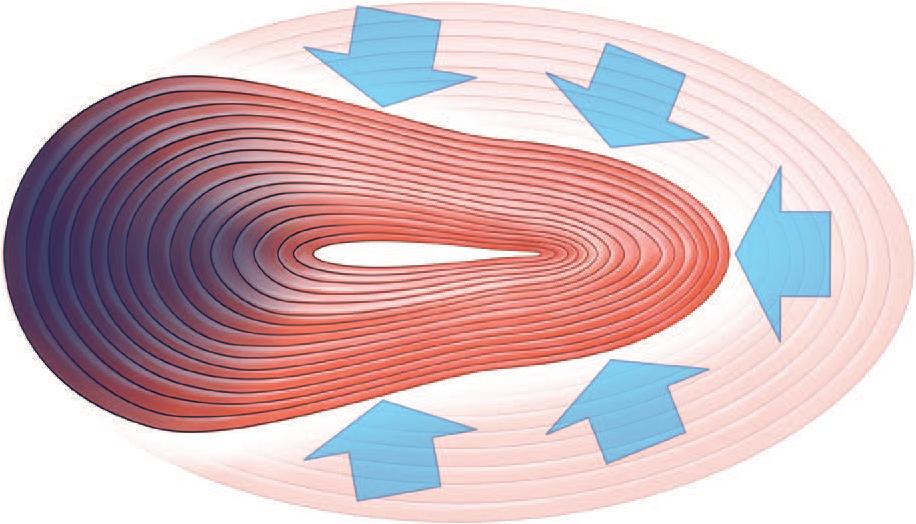
However, this theoretical “lateral browlift” can be thwarted. In a younger patient with good tissue tone and a brow that sits in a good position at rest without much assistance, and the skin and subcutaneous tissue well attached to the muscle, the brow may lift. However, in an older patient who relies on the frontalis for eyebrow and eyelid skin clearance from the visual axis, with skin and subcutaneous tissue excessive or with a long lever arm, frontalis may already be unopposed due to a relaxed orbicularis and maximally contracting frontalis leading to no change.
Most often botulinum toxin will be used to enhance lateral elevation of the eyebrows while maintaining or dropping medial eyebrow position.
Case 1
A young patient with adequate brow position, wishes their frown and forehead lines treated only ( Fig. 17.4 A–C).
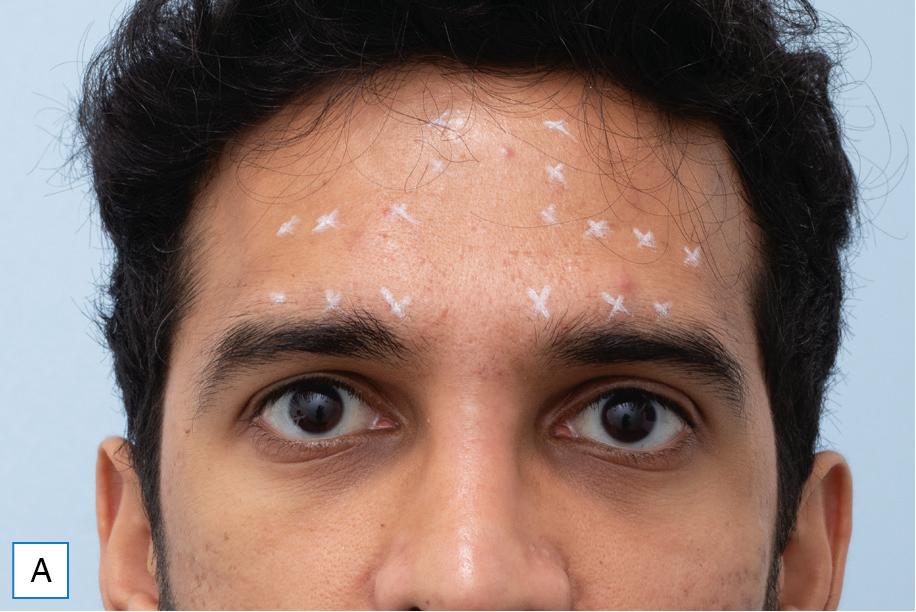
In this instance the brow should be discussed, as treatment of the frown and forehead lines may involve alterations to the brow shape.
This alteration may include:
An inadvertent brow ptosis from treatment of the forehead lines. This is less likely in a young patient with stable brow position. However, overtreatment of the forehead may give a sense of heaviness as paresis of the frontalis may render a feeling of heaviness even in the absence of objective change. (A typical dosing pattern is shown in Fig. 17.4 B).
Suboptimal treatment patterns especially in frown treatment may invoke a Mephistopheles or Spock change to the brow. This involves medial brow depression and extreme lateral brow elevation. This has historical context. When botulinum toxin for the frown was being investigated in the 1980s and 1990s there was concern about the rate of eyelid ptosis occurring from its use. It was thought to be important to raise the height of injections above the brow. It was suggested to inject 1 cm above the brow medially at the head of the corrugator supercilii as well as a centimeter above the brow more laterally at the body or the tail of the corrugator. This was advised to lower the eyelid ptosis rate. Unfortunately, this had the effect of causing medial frontalis injection and paresis as the prime muscle targeted. Injections did diffuse and have impact on the corrugator but not in an optimal targeted fashion. Injections performed in this manner ( ![]() ) tended to depress the medial brow due to their effect on frontalis and by the process of recruitment lift the lateral brow, inducing the devilish Mephistopheles appearance even at rest but especially on attempted lifting of the eyebrow. This issue can be avoided by lowering the injection points ( Fig. 17.4 C) but this must be performed carefully and giving consideration to the corrugator anatomy. The corrugator supercilii has its origin from the medial end of the superciliary arch of the frontal bone and fibers of the orbicularis oculi muscle and inserts in multiple leaflets into the skin just above the eyebrow. Its insertions are visible as small dimples. To follow this muscle with botulinum toxin one should inject more deeply and with a higher dose into the head of the corrugator at the medial edge of the eyebrow where the muscle originates on the bone and gradually move laterally and more superficially in lower dose towards the skin insertions. With these caveats injecting low at the eyebrow will accurately impact the corrugator supercilii along its length, weakening this muscle in isolation, sparing the medial frontalis and not risk inadvertent injection of the levator palpebrae with the risk of eyelid ptosis.
) tended to depress the medial brow due to their effect on frontalis and by the process of recruitment lift the lateral brow, inducing the devilish Mephistopheles appearance even at rest but especially on attempted lifting of the eyebrow. This issue can be avoided by lowering the injection points ( Fig. 17.4 C) but this must be performed carefully and giving consideration to the corrugator anatomy. The corrugator supercilii has its origin from the medial end of the superciliary arch of the frontal bone and fibers of the orbicularis oculi muscle and inserts in multiple leaflets into the skin just above the eyebrow. Its insertions are visible as small dimples. To follow this muscle with botulinum toxin one should inject more deeply and with a higher dose into the head of the corrugator at the medial edge of the eyebrow where the muscle originates on the bone and gradually move laterally and more superficially in lower dose towards the skin insertions. With these caveats injecting low at the eyebrow will accurately impact the corrugator supercilii along its length, weakening this muscle in isolation, sparing the medial frontalis and not risk inadvertent injection of the levator palpebrae with the risk of eyelid ptosis.
Case 2
In an older female with asymmetric brows or multiple forehead line patterns, it is imperative to search for the cause of this asymmetry before embarking on treatment. Incipient ptosis may present with increased or asymmetric brow elevation accompanied by forehead wrinkling and often a high eyelid fold. Examination must include examination of the comparative palpebral aperture suggestive of drooping of the upper lid or the presence or absence of “A-Frame deformity” which is an increased exposure of the upper lid as the levator aponeurosis dehisces from its distal attachments. This A frame may be filled but requires considerable skill ( Fig. 17.5 ). A patient relying on their forehead to act as an elevator in the presence of levator dehiscence should not have their forehead injected as they are relying on this structure to compensate for progressive eyelid ptosis (see Fig. 17.5 and ).
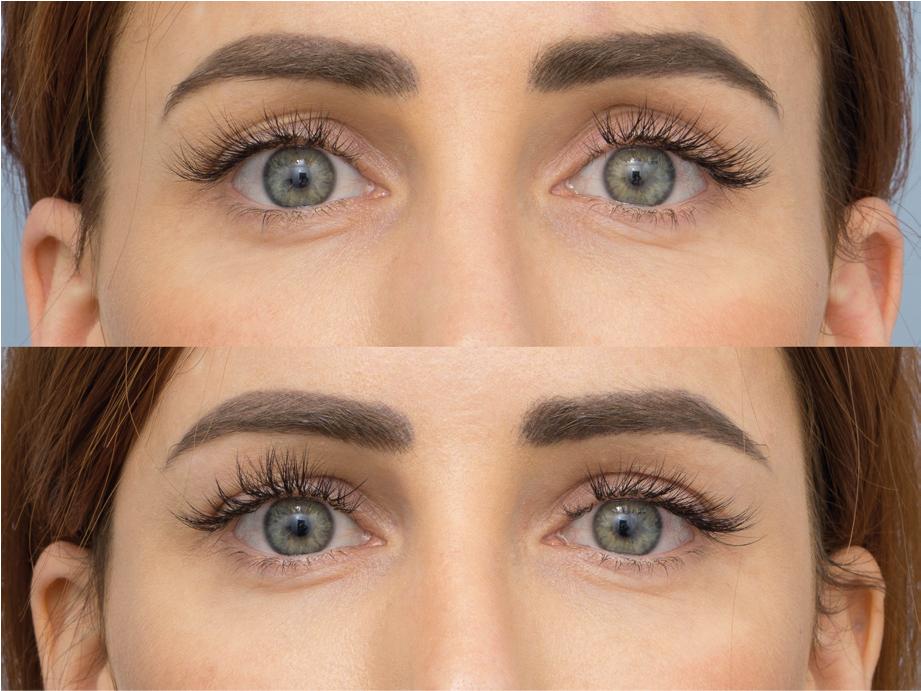
Become a Clinical Tree membership for Full access and enjoy Unlimited articles
If you are a member. Log in here